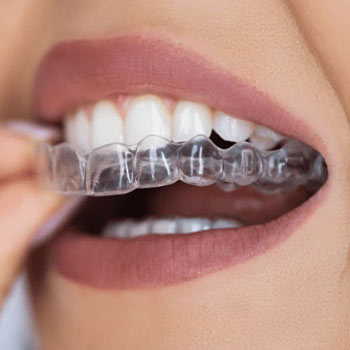What Are Clear Aligners?
Clear aligners have revolutionized orthodontics, offering a modern, convenient, and discreet way to straighten teeth. Unlike traditional braces, clear aligners are nearly invisible and can be removed, making them an increasingly popular choice for both teens and adults. This comprehensive guide explores what clear aligners are, how they work, their benefits, and what to expect during treatment.
Clear aligners are custom-made, transparent trays that fit snugly over your teeth. They are designed to gradually move your teeth into the desired position over time. Typically made from medical-grade, BPA-free plastic, these aligners are crafted to be smooth and comfortable, minimizing irritation to your gums and cheeks.
How Clear Aligners Work?
The process of using clear aligners begins with a consultation with an orthodontist or dentist. Here's a step-by-step overview of what to expect
Initial Consultation
During the first visit, your orthodontist will evaluate your teeth and discuss your goals. This may involve taking X-rays, photos, and digital scans or impressions of your teeth.
Customized Treatment Plan
Based on the collected data, a customized treatment plan is developed. This plan includes a digital representation of how your teeth will move at each stage of the treatment and an estimated timeline
Creation of Aligners
Using the treatment plan, a series of custom aligners is created. Each set of aligners is worn for about one to two weeks before progressing to the next set in the series
Wearing the Aligners
Aligners should be worn for 20 to 22 hours a day, only removing them for eating, drinking (except water), brushing, and flossing. Regular check-ups with your orthodontist are necessary to monitor progress
Completion of Treatment
Once the treatment is complete, you may need to wear retainers to maintain your new smile and prevent your teeth from shifting back
What are thr benefits of Clear Aligners?
Clear aligners offer numerous advantages over traditional braces, including
Discreet Appearance
The transparent material makes aligners nearly invisible, which is particularly appealing for adults and teens who prefer a less noticeable orthodontic treatment
Comfort
The smooth plastic aligners are less likely to cause irritation compared to metal braces, which can sometimes cause sores or discomfort
Convenience
Aligners can be removed, allowing for easier brushing and flossing. This promotes better oral hygiene compared to traditional braces, where cleaning around brackets and wires can be challenging
Fewer Office Visits
While regular check-ups are necessary, clear aligner treatment typically requires fewer visits to the orthodontist than traditional braces
Predictable Results
Advanced digital planning allows for a precise treatment plan, giving you a clear idea of the expected outcome and duration of the treatment
Who Can Benefit from Clear Aligners?
Clear aligners are suitable for a variety of orthodontic issues, including
- Crowded teeth
- Gapped teeth
- Overbite
- Underbite
- Crossbite
- Open bite
However, not all cases can be treated with clear aligners. Severe orthodontic issues or complex cases may still require traditional braces or other orthodontic treatments. It is essential to consult with an orthodontist to determine the best course of action for your specific needs
What to Expect During Clear Aligner Treatment
Embarking on clear aligner treatment involves commitment and adherence to your orthodontist's instructions. Here are some tips to ensure a successful treatment
- Consistent Wear: For optimal results, wear your aligners as recommended, typically 20 to 22 hours a day.
- Proper Care: Clean your aligners regularly using a soft toothbrush and mild soap. Avoid using hot water as it can warp the plastic
- Oral Hygiene: Maintain good oral hygiene by brushing and flossing after meals before reinserting your aligners. This helps prevent food particles from getting trapped and causing cavities
- Regular Check-Ups: Attend all scheduled appointments to allow your orthodontist to monitor your progress and make any necessary adjustments
Clear aligners offer a discreet, comfortable, and effective way to achieve a straighter smile. By understanding the process and committing to the treatment plan, you can enjoy the benefits of improved oral health and enhanced confidence. If you're considering clear aligners, consult with your orthodontist to determine if they are the right option for you. With the right guidance and dedication, clear aligners can transform your smile and boost your self-esteem

